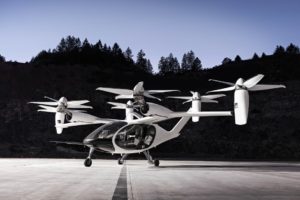The report also predictst that Europe, not Asia, will lead the market. “Countries in this region, such as Germany, UK, and France, are investing heavily in the development and procurement of advanced eVTOL systems for commercial operations,” says the report. “Advancements in the manufacturing capability of emerging economies in this region will drive the market.” Certainly, Europe has played a critical role in discussions of smart cities.
Finally, avionics will be a market segment that gets a boost from the urban air mobility market. “The avionics segment is estimated to lead from 2025 to 2030 owing to increasing developments in platform avionics systems from remotely piloted aircraft to fully autonomous aircraft,” says the summary. “For full autonomy, a suite of sophisticated avionics systems act as an integral part of the platform.”
Miriam McNabb is the Editor-in-Chief of DRONELIFE and CEO of JobForDrones, a professional drone services marketplace, and a fascinated observer of the emerging drone industry and the regulatory environment for drones. Miriam has penned over 3,000 articles focused on the commercial drone space and is an international speaker and recognized figure in the industry. Miriam has a degree from the University of Chicago and over 20 years of experience in high tech sales and marketing for new technologies.
For drone industry consulting or writing, Email Miriam.
TWITTER:@spaldingbarker
Subscribe to DroneLife here.
https://dronelife.com/2021/02/25/urban-air-mobility-market-9-billion-by-2030/
 Unmanned Aerial Vehicle The latest drone news
Unmanned Aerial Vehicle The latest drone news





